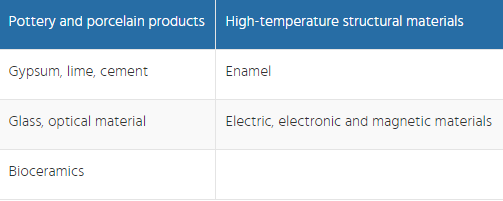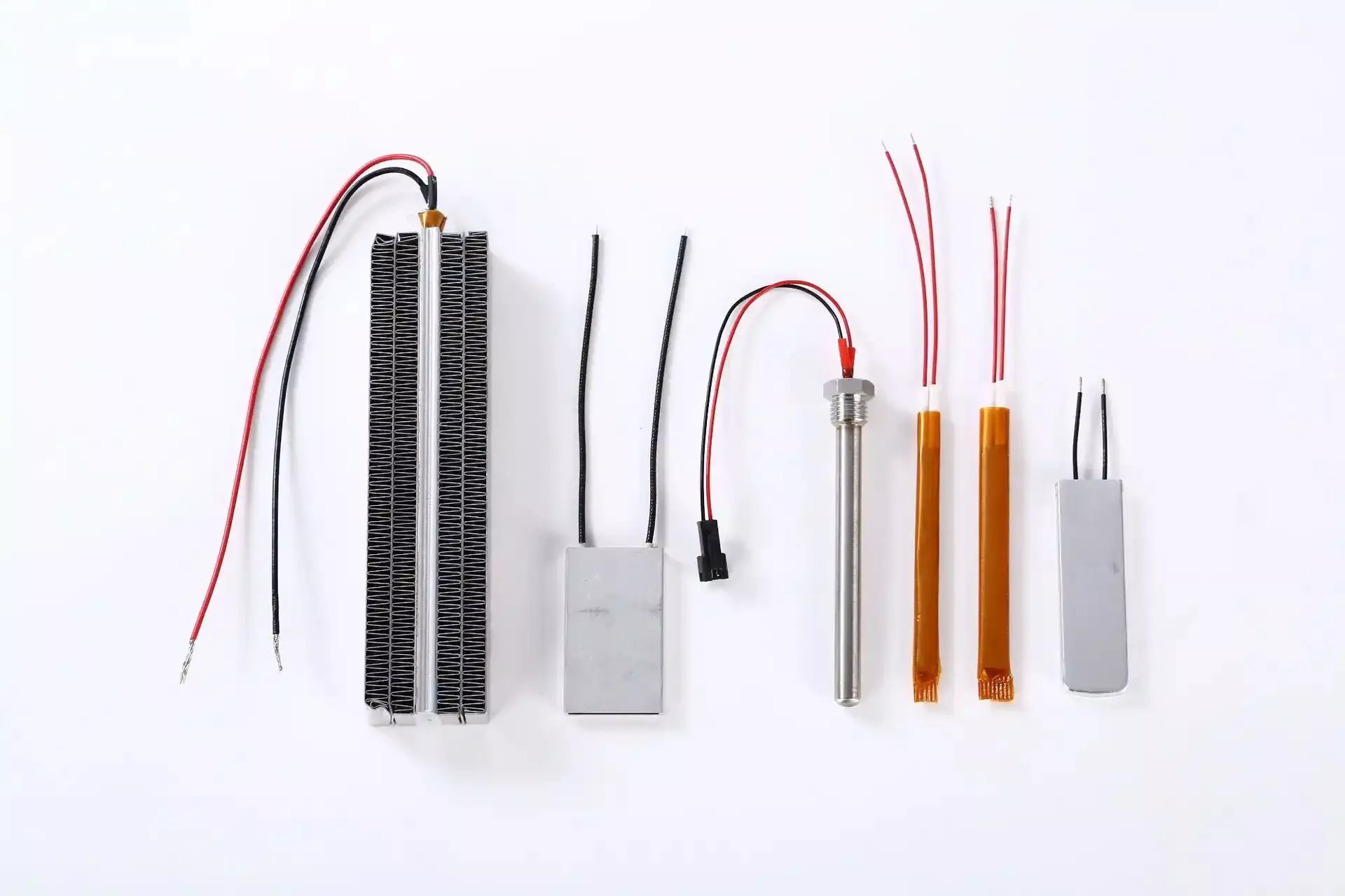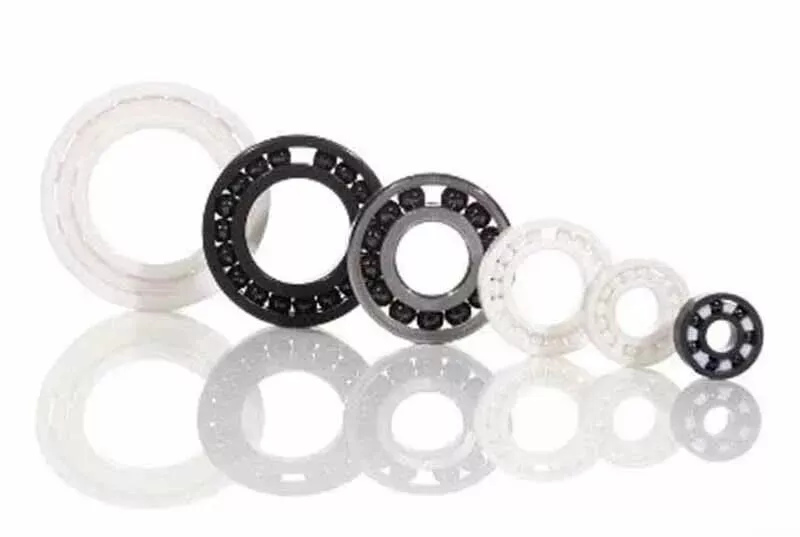Definition of Ceramics
The term “ceramics” represents both man-made and manufactured non-metallic inorganic solid materials. The name comes from keramos (clay used by potters, objects made of clay), which originated from keramikos (of clay, of pottery) or keramikos in Greek. Heat treatment has been typically used for ceramic “manufacturing” since ancient times. Therefore, ceramics is the term used to express ceramic products such as pottery and porcelain products made by high-temperature processing in furnaces. The term also indicates technologies and the science utilized to manufacture these products. The majority of potteries, porcelains, refractories, cement and glass have been made from silicate-based natural materials since early times, and these products are sometimes called traditional ceramics or classical ceramics. The terms “traditional” or “classical” do not necessarily indicate that the technologies are outdated. Both traditional ceramics and classical ceramics have been evolving with social needs and the incorporation of the latest technologies. Since the mid-twentieth century, various kinds of ceramics have been produced using processed raw materials featuring strictly controlled chemical compositions instead of using natural materials. These ceramics are characterized by their thermal, mechanical, electromagnetic optics and biological functions. These new ceramics are sometimes called “technical”, “fine”, “new” or “advanced” ceramics so as to be distinct from traditional ceramics.1.2 Classification of Ceramics by Use Ceramics are classified by use as in Table below Pottery and porcelain products are generic terms used to refer to the so-called “fired wares” made by mixing, forming and firing clay or stone powders. Tableware, tiles and sanitary wares are classified as pottery and porcelain products and are essential for daily life.
Refractories, machine components and cutting tools are classified as high-temperature structural materials and take advantage of the hardness, thermal resistance and abrasion resistance of ceramics. Among them, refractories feature high thermal insulation properties and resist high temperatures from several hundreds to over a thousand degrees Celsius and higher. A large amount of refractories are used in iron-manufacturing furnaces essential for steel production. Refractories are also used in waste incinerators, cement calcination furnaces, electronics industry, reactors and in reusable aerospace craft such as the space shuttle to maintain high temperatures and to protect machines and human bodies from high temperatures. The machine components include ceramic glow plugs for diesel engines, turbocharger rotors and other engine parts, parts for gas turbine engines, heat exchangers and mechanical seals. These components are slightly different from refractories, because high dimensional accuracy, in addition to high strength and thermal resistance is required of these components. Ceramics used as high temperature structural materials feature hardness and high abrasion resistance and are also used as materials for cutting tools, grinding tools and bearings.
Gypsum is made from natural gypsum or synthetic gypsum and used in products for dental treatment as well as to produce industrial models, blasters, molds and boards. Lime is made from limestone and processed lime is used as mortar, wall materials, filler for rubber and plastic, and construction materials. Clay and limestone are the main raw materials of cement, but side products such as iron and steel slag and refuse incineration ash as well as wastes are also used as raw materials in cement. The applications of cement include construction materials, refractories and dental materials.
Advertisement
Enamel is a compound material made by burning inorganic glass-based glaze onto a metal surface and it features mechanical strength of metals, beauty of glass and chemical stability of glass. Enamel is used widely in kitchenware, bath tubs, chemical industry equipment such as reaction cans, brewing tanks, building materials, art products, etc.
Glass is used to make window glass and containers and constitutes the ceramics most frequently seen in daily life. Various types of glass featuring various compositions are also used as optical materials such as lenses and prisms, glass fibers and optical fibers used in composite materials (such as FRP), picture tubes, flat panel displays, hard disk substrates and circuit substrates. Glass is amorphous, but fine crystals (β-spodumene, quarts, mica, etc.) precipitate inside when it is heat-treated in a strictly controlled temperature, depending on the type of glass. Glasses that have crystals precipitated inside are called glass ceramics. Glass ceramics feature higher strength, higher corrosion resistance and lower thermal expansion properties compared with glass. They are used as ceiling boards of electromagnetic cooking devices, turn tables of microwave ovens and exterior walls of buildings.
Ceramics featuring electrical, electronic and magnetic properties are called electroceramics. Electrical and magnetic properties of ceramics usually change substantially due to slight differences in composition and crystal structure. On the other hand, if appropriate compositions and crystal structures are selected, nearly all of the electromagnetic properties, such as insulation properties, electrical conductivity, semiconductive properties, magnetic properties, and superconductive properties, are achieved. Many of the ceramics are high quality insulators and used to manufacture cable insulators, while some of them feature high-temperature superconductivity at the liquid nitrogen temperature. Electrical resistance rises sharply above a certain temperature in some types of semiconductor ceramics. These ceramics are used as smart ceramic heaters because they control the electric current at temperatures higher than a certain level and effective for preventing fires due to overheating. Many ceramic parts featuring a variety of characteristics are incorporated in electronic appliances such as PCs and flat-screen televisions. It is not an exaggeration to say that compact and high performance mobile phones, etc. have been achieved thanks to light and small high-performance electroceramics.
Some of the ceramics feature extremely high biocompatibility and are used in bioceramic applications. Bioceramics are roughly classified into three types: materials that are used inside bodies, materials that are used outside bodies in contact with mucous membranes and skins and materials that are used without direct contact with the human body. The three types are represented by ceramic artificial bones, ceramic crowns and column fillers for high performance liquid chromatographies. They have been incorporated into products used in medical, pharmaceutical and biochemical fields.
Pottery and porcelain products are generic terms used to refer to the so-called “fired wares” made by mixing, forming and firing clay or stone powders. Tableware, tiles and sanitary wares are classified as pottery and porcelain products and are essential for daily life.
Refractories, machine components and cutting tools are classified as high-temperature structural materials and take advantage of the hardness, thermal resistance and abrasion resistance of ceramics. Among them, refractories feature high thermal insulation properties and resist high temperatures from several hundreds to over a thousand degrees Celsius and higher. A large amount of refractories are used in iron-manufacturing furnaces essential for steel production. Refractories are also used in waste incinerators, cement calcination furnaces, electronics industry, reactors and in reusable aerospace craft such as the space shuttle to maintain high temperatures and to protect machines and human bodies from high temperatures. The machine components include ceramic glow plugs for diesel engines, turbocharger rotors and other engine parts, parts for gas turbine engines, heat exchangers and mechanical seals. These components are slightly different from refractories, because high dimensional accuracy, in addition to high strength and thermal resistance is required of these components. Ceramics used as high temperature structural materials feature hardness and high abrasion resistance and are also used as materials for cutting tools, grinding tools and bearings.
Gypsum is made from natural gypsum or synthetic gypsum and used in products for dental treatment as well as to produce industrial models, blasters, molds and boards. Lime is made from limestone and processed lime is used as mortar, wall materials, filler for rubber and plastic, and construction materials. Clay and limestone are the main raw materials of cement, but side products such as iron and steel slag and refuse incineration ash as well as wastes are also used as raw materials in cement. The applications of cement include construction materials, refractories and dental materials.
Advertisement
Enamel is a compound material made by burning inorganic glass-based glaze onto a metal surface and it features mechanical strength of metals, beauty of glass and chemical stability of glass. Enamel is used widely in kitchenware, bath tubs, chemical industry equipment such as reaction cans, brewing tanks, building materials, art products, etc.
Glass is used to make window glass and containers and constitutes the ceramics most frequently seen in daily life. Various types of glass featuring various compositions are also used as optical materials such as lenses and prisms, glass fibers and optical fibers used in composite materials (such as FRP), picture tubes, flat panel displays, hard disk substrates and circuit substrates. Glass is amorphous, but fine crystals (β-spodumene, quarts, mica, etc.) precipitate inside when it is heat-treated in a strictly controlled temperature, depending on the type of glass. Glasses that have crystals precipitated inside are called glass ceramics. Glass ceramics feature higher strength, higher corrosion resistance and lower thermal expansion properties compared with glass. They are used as ceiling boards of electromagnetic cooking devices, turn tables of microwave ovens and exterior walls of buildings.
Ceramics featuring electrical, electronic and magnetic properties are called electroceramics. Electrical and magnetic properties of ceramics usually change substantially due to slight differences in composition and crystal structure. On the other hand, if appropriate compositions and crystal structures are selected, nearly all of the electromagnetic properties, such as insulation properties, electrical conductivity, semiconductive properties, magnetic properties, and superconductive properties, are achieved. Many of the ceramics are high quality insulators and used to manufacture cable insulators, while some of them feature high-temperature superconductivity at the liquid nitrogen temperature. Electrical resistance rises sharply above a certain temperature in some types of semiconductor ceramics. These ceramics are used as smart ceramic heaters because they control the electric current at temperatures higher than a certain level and effective for preventing fires due to overheating. Many ceramic parts featuring a variety of characteristics are incorporated in electronic appliances such as PCs and flat-screen televisions. It is not an exaggeration to say that compact and high performance mobile phones, etc. have been achieved thanks to light and small high-performance electroceramics.
Some of the ceramics feature extremely high biocompatibility and are used in bioceramic applications. Bioceramics are roughly classified into three types: materials that are used inside bodies, materials that are used outside bodies in contact with mucous membranes and skins and materials that are used without direct contact with the human body. The three types are represented by ceramic artificial bones, ceramic crowns and column fillers for high performance liquid chromatographies. They have been incorporated into products used in medical, pharmaceutical and biochemical fields.
声明:本文由 CERADIR 先进陶瓷在线平台的入驻企业/个人提供或自网络获取,文章内容仅代表作者本人,不代表本网站及 CERADIR 立场,本站不对文章内容真实性、准确性等负责,尤其不对文中产品有关功能性、效果等提供担保。本站提醒读者,文章仅供学习参考,不构成任何投资及应用建议。如需转载,请联系原作者。如涉及作品内容、版权和其它问题,请与我们联系,我们将在第一时间处理!本站拥有对此声明的最终解释权。













